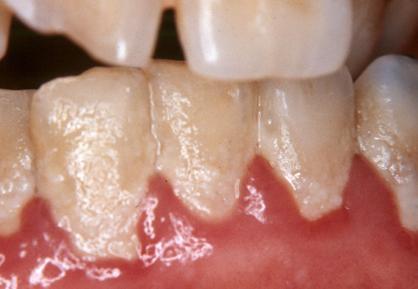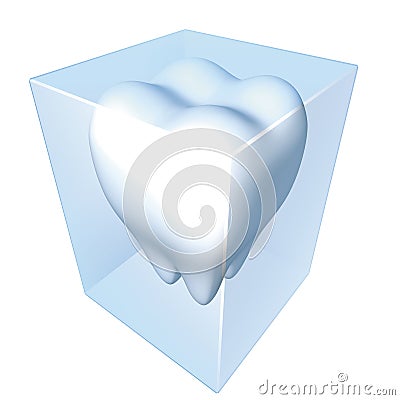How tired you were?
Your To Do list?
Where that random rash came from?
Did the Red Sox lose, again, last night?
What will happen next week on Hart of Dixie?
I think you get the point.
Very rarely does anyone think about what they are actually doing when they brush their teeth.
Brushing is one of those things, like tying your shoes, that your mother taught you how to do when you were five... though you can’t actually remember her teaching you, and you don't really have any idea if she did.
In my dental hygiene practice, one thing I’ve realized is that the majority of us do not know why we brush, let alone how to brush. Yes, it’s a simple and an elementary task, and yes, I feel silly and bad for the patient every time I have to correct them. But with a tweak here and a tweak there, your brushing could improve enough to prevent future cavities and gum disease.
Let me clarify four things first, and then I'll reveal the easy, proper way to brush.
1. Everything that happens in your mouth comes down to properly brushing and flossing. This is the cheapest, most effective, and easiest way to prevent cavities and gum disease. You don't need to buy mouthwash, or magical toothpaste, or more expensive floss. If you do nothing else but consistently brush and floss well (and get regular cleanings), your mouth should be in good shape.
2. My mother has soft teeth and so do I. I will bust this myth in-depth in an upcoming post, but I do want to acknowledge that it is, indeed, a myth. There is no such thing as soft teeth. This is just an excuse for bad brushing and flossing habits. I'll admit there are slight genetic variations in each persons tooth structure. But what research has shown is that how we treat our teeth is what has the most influence on their health.
Your mother didn’t inherently give you her soft teeth; however, she did pass on her habits.
What this means is that if your mother never flossed her teeth, then mostly likely you won’t either. If you grew up on a diet full of sugar, then mostly likely you will continue that habit. If you come from a family that only went to the dentist when they were in pain, then most likely you will too.
This, then, explains the phenomenon of why your mother always had cavities, and why you do too. Or why your father struggled with gum disease, and why you do too.
3. The purpose of brushing (and flossing) is to mechanically remove the plaque, food, and otherwise disgusting stuff that builds up on your teeth.
You know that fuzzy feeling on your teeth after you eat ice cream or a chocolate bar? That, my friends, is plaque.

In some easy-to-reach areas, like the tongue side of your teeth, your tongue and saliva are pretty effective at removing the plaque. These areas get the least amount of cavities because they are naturally kept clean and also because they are the easiest places to brush.
Its in the areas that don‘t clean themselves and that are hard to brush that you need to focus: the grooves of your teeth, between your teeth, and your back teeth.
(Sidenote: If you could get your toothbrush between your teeth, then you wouldn't need to floss.)
What you need to understand is what happens when you don't brush twice a day or floss once. When the plaque is not removed within 12 hours, it begins a chain reaction of negative (and totally preventable) consequences:
(Sidenote: If you could get your toothbrush between your teeth, then you wouldn't need to floss.)
What you need to understand is what happens when you don't brush twice a day or floss once. When the plaque is not removed within 12 hours, it begins a chain reaction of negative (and totally preventable) consequences:
-At the same time that the fuzzy plaque is causing cavities and robbing your bank account, it is also causing your immune system to aggressively alter the gums in that area... more blood will flow, they will hurt and bleed when you floss, and they will swell. This is gingivitis. At this point, it is still possible for you to remove the plaque and for your gums to return to health.
-But let's say you don't remove the plaque and a few more weeks go by. The plaque will harden and turn into calculus (tartar)… thus making it impossible for you to clean off (that‘s my job!). Calculus attracts more bad bacteria, bringing more blood flow and swelling to the gums... this time causing lots of pain and permanent damage to your mouth. This is chronic gum disease, AKA periodontal disease. Once you have periodontal disease, you can never get rid of it.

When you mechanically remove that fuzzy plaque, not only are you preventing the unhealthy chain reactions mentioned above, but you are preventing yourself from so much future hastle, worry, pain and stress. THAT ALONE should be enough motivation to brush and floss correctly.
 A small head.
A small head.Soft bristles.
If your toothbrush is too big, you will not be able to reach the back of your mouth. I use a child-sized toothbrush and often recommend this to anyone who has problems brushing their back molars.
SO HOW SHOULD YOU BE BRUSHING?
1. Hold your toothbrush so that the bristles can go under the gums (instead of holding it straight on). This is described as a 45 degree angle. When you hold it this way, the bristles have a chance to massage the gums and clean the area where your gums touch your teeth. This is described as 'brushing your gums.' This is why only using SOFT bristles is vitally important.

2. Using minimal pressure (basically no pressure), brush in little circles. DO NOT SCRUB WITH YOUR TOOTHBRUSH. When you scrub, you are using too much force and are missing the surfaces between your teeth, the most likely place to get cavities.
3. Think about each tooth as a cube with 6 sides. Brush each side for about 5 seconds. In those five seconds, be sure to touch every side of the cube... the back side, the cheek side, the front side, the tongue side, the chewing side. Even though your bristles won't actually reach between the teeth (where you would floss), still make it a practice get the brush in there as much as possible.

4. Change it up. If you want to brush the cheek side of all of your teeth first and then brush the tongue side? That is fine, just be thorough. Many hygienists believe it is a good idea to brush in the same order each time to promote habit. HOWEVER, if you do it that way, its super easy to consistently miss the same area again and again and again. So I recommend to change it up. Begin brushing on your right side today. Then begin on your left side tomorrow. The next day begin on your back teeth. Then the next day, start on your bottom teeth.
For the visual learner:

(Wondering how much toothpaste to use? Ignore what the commercials show and know that a PEA-SIZED amount of toothpaste is the correct amount.)
So go brush your teeth and experiment. Instead of thinking about what you will make for dinner tomorrow, think about where the bristles are going. Try to get those bristles between your teeth as much as possible. Try to get them to the very back side of your very back tooth. And be diligent.
It’s amazing how much improvement can happen by simply thinking about what you are doing.
So go brush your teeth and experiment. Instead of thinking about what you will make for dinner tomorrow, think about where the bristles are going. Try to get those bristles between your teeth as much as possible. Try to get them to the very back side of your very back tooth. And be diligent.
It’s amazing how much improvement can happen by simply thinking about what you are doing.
Love,
Your friendly dental hygienist, (m)
*As always, I try to present the most current, valid, un-biased facts on dentistry. I promise I will clearly note when I am giving my opinion. The medical field is always changing, so when new research comes out, I will do my best to update you. If you are curious to know where I get my facts, please go here and here or feel free to contact me.

No comments:
Post a Comment